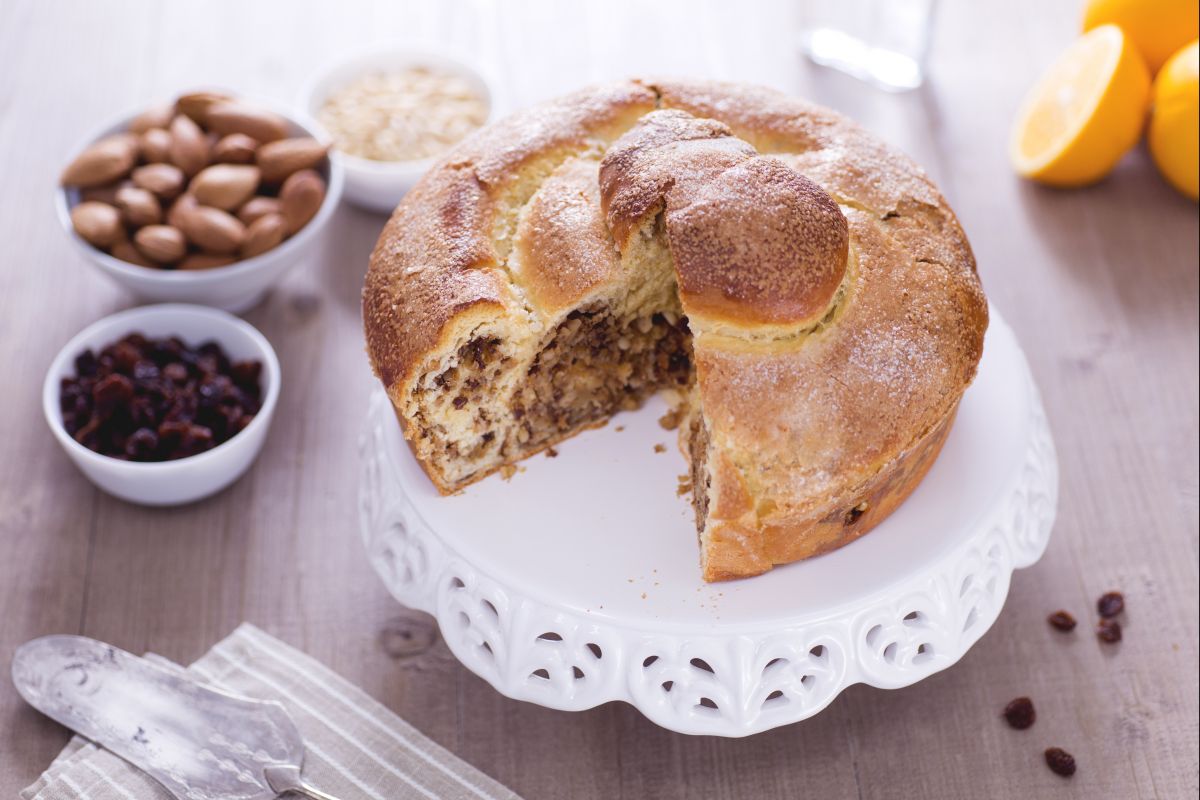Bucatini with sardines, raisins, and pine nuts
- Average
- 50 min

Gubana is a beloved dessert from Friuli-Venezia Giulia, and it really captures the heart of the region's rich traditions and flavors. I mean, this spiral-shaped Italian sweet bread hails from the Valli del Natisone, with roots tracing way, way back to the Middle Ages. And the name "gubana"? Pretty cool. It likely comes from the Slavic word "guba," meaning fold, or "guban," a local mushroom with a similar shape.
First thing you'll notice is its golden crust. But seriously, the real magic? It's in the moist, spiced filling. People just keep reaching for more. Packed with nuts, raisins, and candied fruit—plus a splash of grappa or marsala—the filling offers a tangy surprise you will not find in many other breads. And listen, though this bread shines during the holidays, locals enjoy it year-round. It's like every family has their own recipe, passed down through generations.
Stories about gubana go back centuries. Even Pope Gregory XII reportedly enjoyed it at some lavish feast! Every family in Friuli-Venezia Giulia seems to have their own twist on the gubana recipe. Sure, there are variations in spices or dried fruits, but the core elements? They remain unchanged. The tender dough, rolled with a sweet, nutty center, creates a memorable flavor experience.
Compared to other traditional Italian pastries, gubana really offers a richer, almost intoxicating aroma from the liquor, and a texture that stays soft and chewy for days—seriously good. People often bring it to gatherings, slicing it so everyone can enjoy the unique blend of flavors. For those curious about gubana cake or eager to explore beyond typical desserts, this bread provides a taste of Friuli’s history and culinary heritage. Whether you're savoring it during a festive occasion or as a special treat any time of year, gubana reflects the deep cultural pride and flavorful traditions of its homeland. So here's the thing: you gotta try it.

To prepare gubana, start with the starter dough: in a large bowl, sift the flour, then add the dry yeast 1. Gradually add the warm milk 2 and knead with your hands until you obtain a smooth mixture without lumps. Shape it into a ball and let it rest at room temperature covered with plastic wrap for about 1 hour 3.

The starter dough should double in volume 4: if it hasn't reached the necessary volume, let it rise further. Now take a stand mixer with the paddle attachment and pour in the sifted flour and sugar 5, then add the starter dough 6.

Then pour in the beaten eggs 7, the grated zest of an untreated lemon 8, and the grappa 9.

Start the stand mixer at medium speed and begin to add the room temperature milk gradually 9. When all ingredients are combined, remove the paddle and replace it with the dough hook: add a pinch of salt and start kneading at medium speed. At this point, gradually add the softened room temperature butter: add a piece 11 and once absorbed, continue with another. The dough should be elastic and wrap around the hook. Remove the dough from the mixer, shape it into a ball, and place it in a bowl covered with plastic wrap, letting it rise in the oven with the light on for about 3 hours or until it doubles in volume.

Meanwhile, prepare the gubana filling. Rinse and then place the raisins in a bowl to soak in 100 g of marsala 13; let them soften this way for at least 20 minutes or more if needed. While the raisins are softening, blend the walnut kernels in a mixer until you get a very fine chop 14. Repeat the process for the pine nuts and almonds, to obtain 3 separate chops 15.

Now, take a non-stick pan with a wide base and melt the butter over low heat. Once completely melted, add the breadcrumbs 16: toast it for about 5 minutes. Stir lightly with a wooden spoon or toss it to prevent burning. When ready, turn off the heat and set it aside in a small bowl. Then take the softened raisins, drain them 17, and blend finely 18.

Now you can start combining the ingredients for the gubana filling: in a bowl pour the toasted breadcrumbs, raisins 19, walnuts 20, and pine nuts 21.

Then add the almonds 22, the grated zest of an untreated lemon, the grappa 23, and the remaining 10 g of marsala 24.

Separate the yolks from the whites and pour the yolks into the bowl with the other filling ingredients 25, while in a separate bowl, whip the egg whites to stiff peaks 26, then add them to the other ingredients 27, folding gently with a spatula from bottom to top, making sure not to deflate the egg whites. The filling is now ready.

Roll out the risen dough with a rolling pin to a thickness of about 1/5 inch 28: it should be roughly a rectangle of about 20x24 inches. Place the filling inside 29, leaving a border of about 3/4 inch. Brush these edges with beaten egg 30

Start rolling the dough onto itself 31, slightly lengthening it by moving your hands from the center outward. Seal the edges well to prevent the filling from escaping. Take a 9-inch diameter buttered and floured pan 32: start placing one end of the roll in the center and coil it onto itself within the mold to create a spiral shape. Let rise in the turned-off oven with the light on for another 30 minutes. Then brush the entire surface of the gubana with the egg 33.

Sprinkle with sugar 34 and bake in a preheated static oven at 340°F for 60 minutes (or bake in a preheated convection oven at 290°F for 40-45 minutes) 35. After the baking time, remove the pan from the oven and let it rest for 10 minutes before serving your gubana 36!